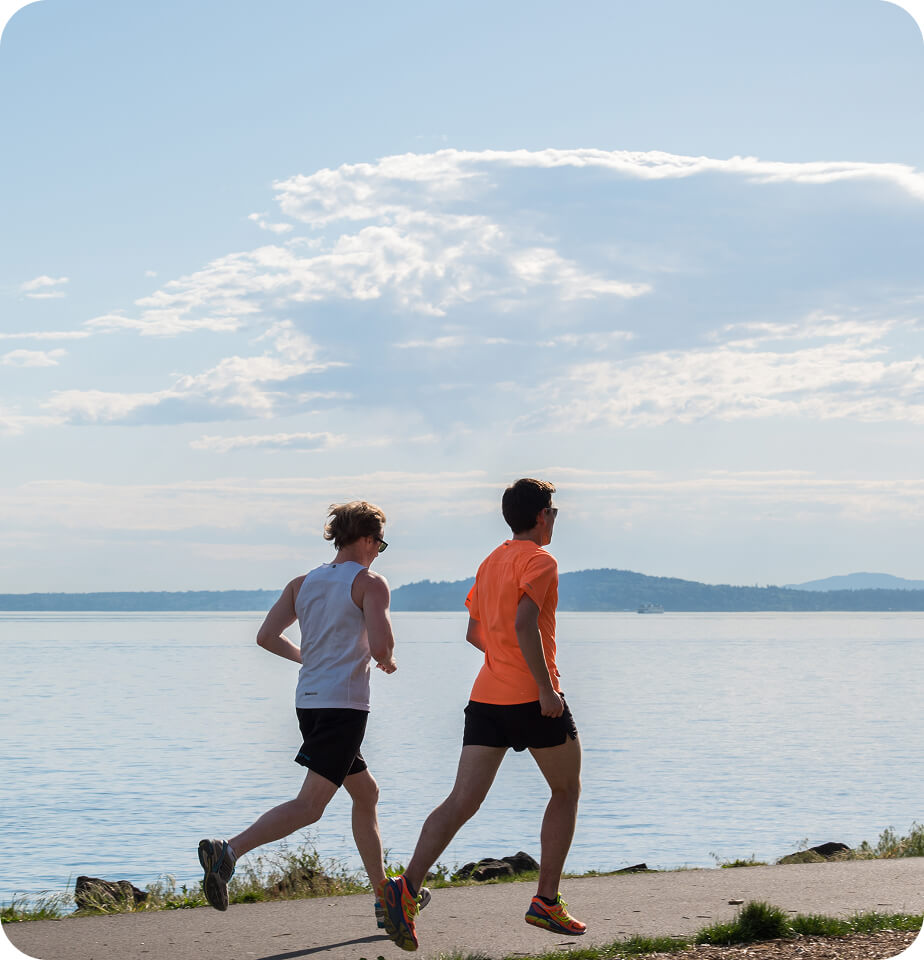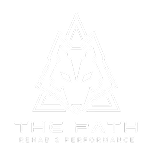The Ultimate Injury Prevention Guide for Fall Runners in Tacoma, WA

Tacoma’s fall season offers crisp air, colorful scenery, and a refreshing break from the summer heat—making it a favorite time for runners to increase their mileage, train for late-season races, or simply enjoy the outdoors. But as ideal as autumn may seem for logging miles, it also presents unique challenges. Shifting weather conditions, wet leaves, and cooler temperatures can create the perfect storm for running-related injuries.
READ: Why Every Outdoor Athlete Should See a Physical Therapist Before Their Next Trip
Injury prevention becomes especially crucial during this season, particularly for dedicated runners pushing toward performance goals. Whether you're preparing for a half marathon or just looking to stay healthy while enjoying local trails, being proactive about injury prevention can keep your momentum strong through the fall.
At The Path PT in Tacoma, we specialize in running physical therapy designed to help athletes of all levels stay resilient year-round. This guide offers everything you need to run smarter, safer, and injury-free through the fall.
Understanding Common Running Injuries in the Fall
Fall brings a mix of dry and rainy days, unpredictable temperatures, and slippery surfaces—all of which can increase the risk of injury. As mileage ramps up, runners often overlook small aches that can turn into chronic issues.
Here are some of the most common fall running injuries we treat at The Path PT:
- Plantar Fasciitis: Cooler temps often lead to tight calves and stiff arches, setting the stage for heel pain.
- Achilles Tendinopathy: Running in cold weather without a proper warm-up can strain the Achilles tendon.
- IT Band Syndrome: Often triggered by increased mileage or hill running, common in Tacoma’s terrain.
- Shin Splints: Frequent with runners increasing volume too quickly, especially on hard or uneven surfaces.
- Patellofemoral Pain: Downhill running and improper mechanics contribute to this all-too-common knee issue.
Recognizing early warning signs—such as stiffness that lingers into your runs or discomfort that returns after rest—is key. The earlier you identify these patterns, the easier it is to correct them before they become more serious.
How Seasonal Changes Impact Running Biomechanics
Fall in Tacoma can mean foggy mornings, damp roads, and trails covered in slippery leaves. These changes affect your running form in ways you might not immediately notice. Wet surfaces reduce traction, causing subtle shifts in foot strike, stride length, and joint loading.
In addition, cooler temperatures tighten muscles and reduce neuromuscular responsiveness, making warm-ups even more important. A fatigued or cold body is slower to react to unstable footing, which increases injury risk.
The lack of daylight also plays a role. Running in low visibility conditions impacts posture and confidence in foot placement, often leading to guarded mechanics. All of these micro-adjustments can have a compounding effect on your joints and soft tissues over time.
Understanding how external conditions alter your biomechanics is one reason gait analysis becomes a vital part of your fall running toolkit.
The Role of Gait Analysis in Injury Prevention
Gait analysis is the cornerstone of effective injury prevention for runners. At The Path PT, our running physical therapy services include detailed movement evaluations that uncover subtle inefficiencies in your stride. This may include overstriding, poor pelvic control, or asymmetrical loading patterns—all of which are magnified during fall conditions.
We use high-speed video, pressure mapping, and functional assessments to evaluate your running form. But it doesn’t stop there. We also assess mobility, strength, and stability to connect the dots between your movement patterns and your injury risk.
Fall is a particularly smart time to get a gait analysis. You're likely running more, facing more variable conditions, and may already be noticing tightness or discomfort. Addressing small biomechanical issues now can save you from major setbacks during the peak of training season.
READ: Transitioning from Spring to Summer Training: What Every Outdoor Athlete Should Know
Smart Marathon and Race Training Strategies for the Fall
Fall is a favorite season for race training in the Pacific Northwest. Tacoma runners often prepare for events like the Point Defiance 30K or make final pushes toward late-season marathons. But pushing your limits without a strategy increases the risk of overuse injuries.
Here’s how to train smarter:
- Follow a Periodized Plan: Avoid cramming too much mileage into a short window. A well-designed plan includes recovery weeks and builds intensity gradually.
- Respect Recovery: Fall races may be back-to-back. Don’t skip recovery days or downplay soreness.
- Adjust for Weather: Wet or cold conditions slow your pace naturally. Focus on effort, not just numbers.
- Strength + Run Balance: A plan that includes strength sessions (2x/week minimum) keeps your body balanced.
The team at The Path PT can collaborate with your coach or provide customized running programs to keep you on track for your goal race without pushing into the injury zone.
Essential Warm-Ups and Mobility Drills for Cooler Temperatures
Cool muscles are more prone to strain, and skipping your warm-up is one of the fastest ways to invite injury during fall runs. A good warm-up increases blood flow, activates stabilizing muscles, and primes your nervous system.
Here’s a simple fall running warm-up sequence we recommend at The Path PT:
- Leg Swings (forward/backward and side-to-side): 20 each leg
- Glute Bridges: 2 sets of 10 reps
- High Knees or Skips: 30 seconds
- Dynamic Lunges with a Twist: 10 each side
- Ankle Circles and Calf Raises: 15 reps
Following this routine helps prevent tendon strain and ensures you're ready to hit your stride. Post-run, a few minutes of foam rolling and mobility work can further reduce tightness and promote recovery.
Cross-Training and Strength Work to Stay Resilient
Cross-training is a powerful, often overlooked tool for injury prevention. For runners, integrating low-impact activities like cycling, rowing, or swimming gives your joints a break while maintaining cardiovascular fitness.
Equally important is strength training. Runners benefit immensely from exercises that target the hips, core, and glutes—the engine behind a strong stride.
At The Path PT, our physical therapists guide runners through strength routines that fit seamlessly into their weekly schedules. Popular exercises include:
- Single-leg deadlifts
- Side planks with leg lifts
- Goblet squats
- Step-ups with knee drive
Many of our clients also participate in CrossFit-style strength work. With proper form and progressions, this type of training builds resilience and enhances running performance, particularly as terrain and conditions become more demanding in the fall.
When to Seek Help: Early Signs You're Headed Toward Injury
Too many runners wait until they're limping to seek help. But injury prevention is about listening to your body and acting early. Here are signs that it's time to see a running physical therapist:
- Pain that lingers beyond 48 hours
- Discomfort that worsens with each run
- Aches that shift from one area to another
- Swelling or stiffness that limits mobility
- Recurrent injuries or patterns
By addressing these issues early, you can often resolve them with minor adjustments to your form, footwear, or training load. At The Path PT, we offer assessments tailored to runners so you can keep progressing without a forced break.
Why Cash-Based Running Physical Therapy Is a Game-Changer
Unlike traditional PT clinics that rely on insurance referrals and approval, our cash-based model allows us to provide immediate, personalized care to runners when they need it most.
Here’s why runners in Tacoma are choosing The Path PT:
- No waiting or referrals required
- One-on-one sessions with a dedicated physical therapist
- Custom programs designed for runners, by runners
- Access to gait analysis, strength training, and recovery tools in one location
We understand the demands of running because we live it. Whether you're training for your next PR or just want to enjoy Tacoma’s trails pain-free, we’re here to support your journey every step of the way.
Your Tacoma Running Injury Prevention Checklist
As you prepare to enjoy the fall running season, use this checklist to keep your body strong and injury-free:
- Warm up thoroughly before each run
- Gradually increase mileage and vary terrain
- Incorporate strength and mobility work 2–3 times per week
- Schedule a gait analysis if you notice form changes or discomfort
- Cross-train weekly to reduce repetitive strain
- Seek help at the first sign of persistent pain
Fall is a beautiful season to be a runner in Tacoma. Don’t let preventable injuries slow you down. Schedule a running-specific assessment or gait analysis at The Path PT and stay strong through the season and beyond.
Contact us to Book your appointment today.
Dr. Brooks Kenderdine
PT, DPT, CSCS
Co-owner | The Path Rehab & Performance
Sign up for our newsletter
Join our community and receive exclusive physical therapy insights, training strategies, and recovery techniques tailored for active people.
